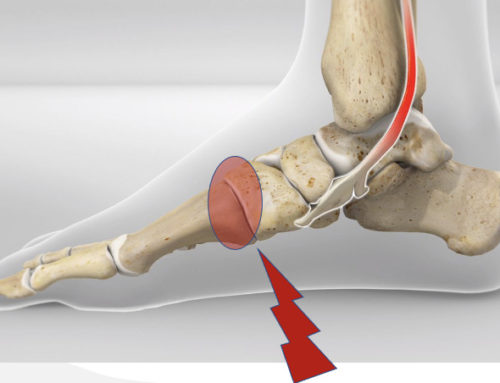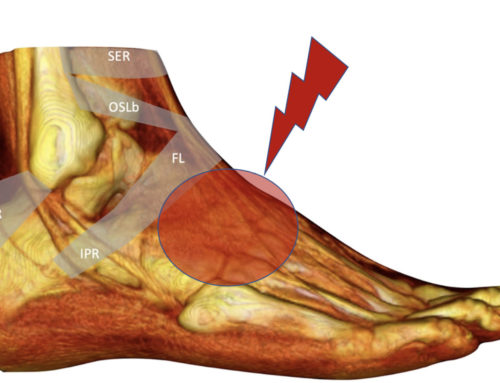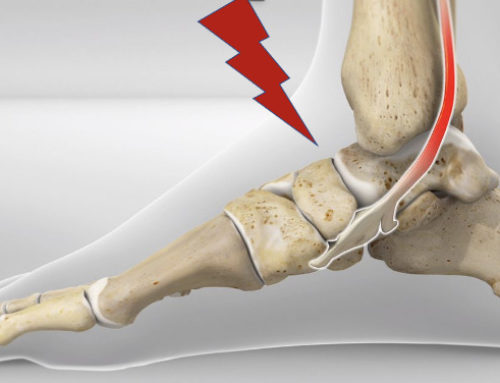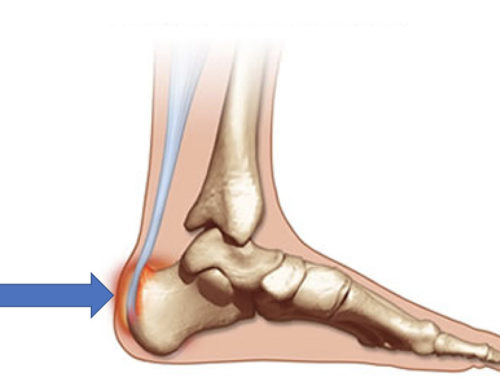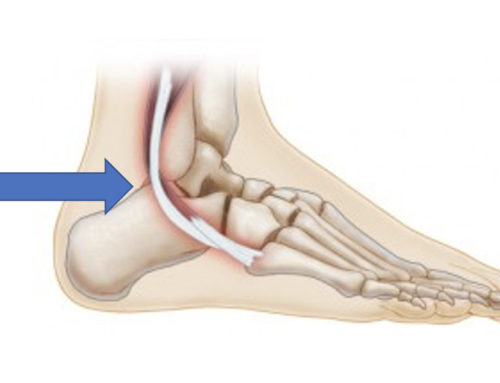Big Toe Pain: 5 Causes of a Painful Big Toe
Big Toe Pain: Hallux Rigidus, First Toe Pain, Great Toe Pain
Hallux rigidus is when stiffness, soreness, and pains occur in the big toe or great toe! There are many causes of hallux pain or first toe pain. This article will include the most common causes including hallux arthritis, turf toe ( hallux compression injury), bunions, and mechanical reasons for having soreness or pains in the hallux (big toe). This article will focus on the most common reasons for hallux pain and soreness while leaving out the less common painful causes of great toe pain such as gout, broken toes, and toenail soreness. Basically
Big Toe Arthritis
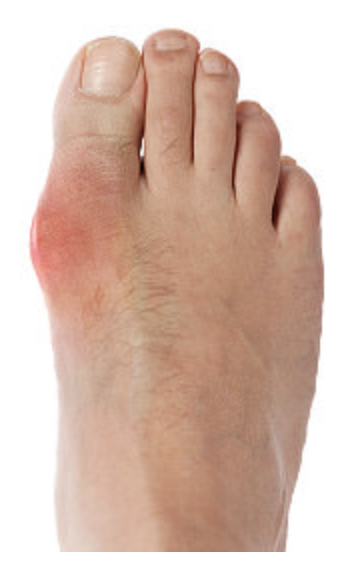 Causes of big toe pain or sharp pain big toe include hallux rigidus or big toe arthritis. Arthritis is and is one of the most common disorders causing big toe pain.
Causes of big toe pain or sharp pain big toe include hallux rigidus or big toe arthritis. Arthritis is and is one of the most common disorders causing big toe pain.
This is generally caused by long-term altered biomechanics of the foot, ankle, and hip. When the big toe deviates inwards towards the other toes it limits the ability of the great toe to extend through its range of motion. Over time the improper position creates degeneration and causes big toe joint pain during walking and exercising.
Symptoms
- Swelling and big toe joint pain
- Limited and often sharp pain in the big toe with push-off movements such as running ( hallux rigidus )
- Enlarged and painful big toe joint.
- heel pain, foot, and ankle pain can also be present due to the loss of toe conditions that allow proper loading of the plantar fascia.
Treatment
- Open toe box shoes to allow the normal position of the big toe during gait.
- Exercises to encourage big toe mobility and proper alignment.
Since the joint capsule and soft tissues around the joint will be rigid, stiff, and eventually painful, proper myofascial release of the surrounding soft tissues including
- Adductor hallucis
- Extensor hallucis longus and brevis
- Abductor hallucis
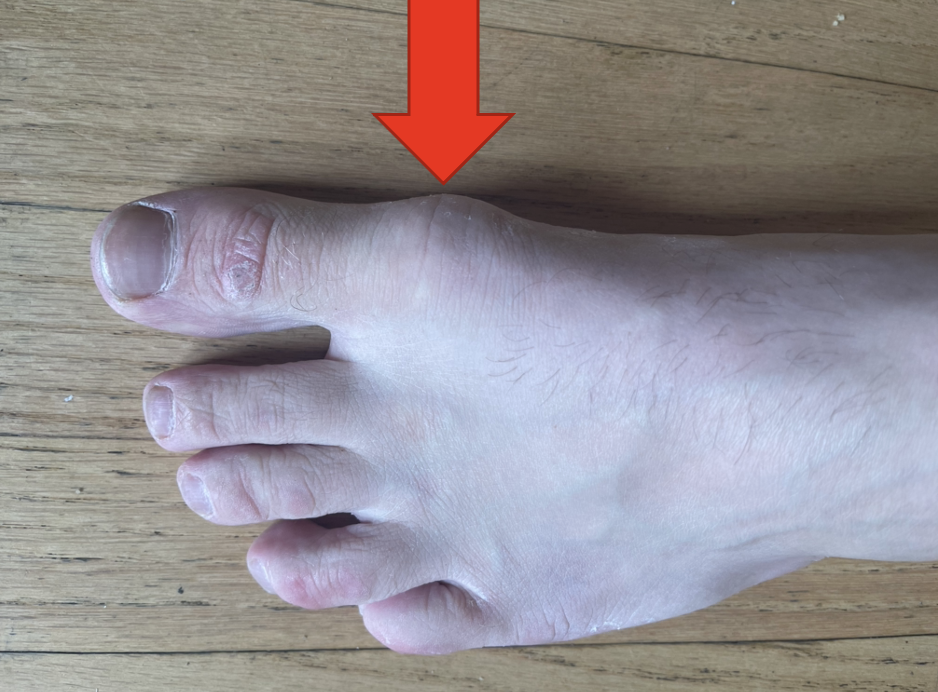
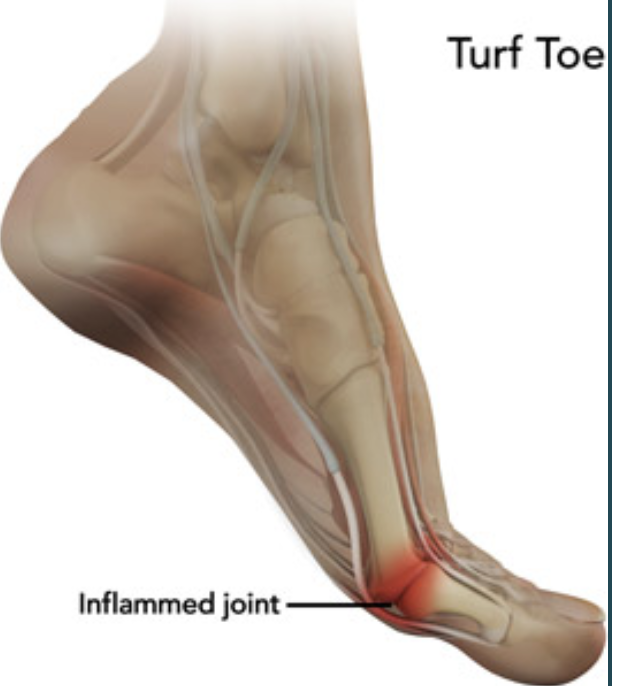
Turf Toe
Turf toe causes sharp pain in the big toe. This is usually due to the repetitive jamming of the big toe upwards, which commonly occurs on turf fields since it’s less shock absorbent. Turf Toe can also frequently occur during running, jumping or any sport that involves an awkward hyperextend jamming, or inward movement of the big toe. This is the very aggressive and repetitive version of stubbing your toe. This over a long period of time can cause big toe arthritis or hallux rigidus.
Typically, the soft tissue structures on the bottom side of the big toe are injured such as the flexor hallucis brevis, collateral ligaments, sesamoids, and planter proper digital nerves.
Symptoms
- Local swelling
- Big toe pain and shooting pain in the big toe
- Limited big toe extension
- Loss of strength in big toe flexion
Treatment
Assuming that no tearing of the plantar soft tissues then this sort of big toe pain can be conservatively treated.
- Treat Capsular derangement with either compression or distraction joint mobilizations (doctor performed)
- Active Big toe flexion and extension exercises focusing on rebuilding the strength of the flexors.
- Mobilization and normalization of the local neurology including the plantar digital nerves.
- Sand bucket foot exercises, short foot exercises, Vele’s lean and isometric exercise progressions.
Running and jumping can be gradually reintroduced after 2 weeks.
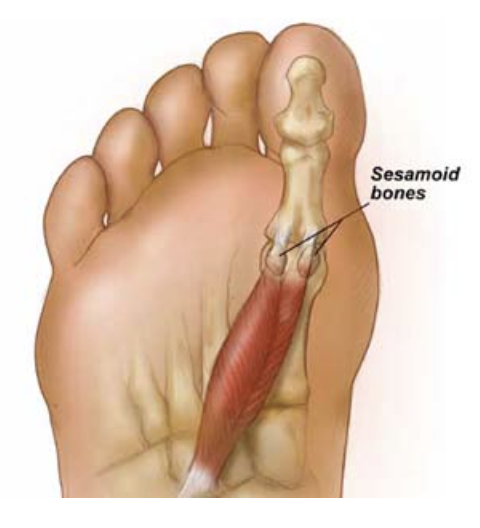 Sesamoiditis
Sesamoiditis
Sesamoid bones are bones that are suspended in a tendon or muscles and help increase the force of a pully system. The Patella is a great example of a sesamoid bone.
Sesamoiditis of the big toe occurs when the sesamoid bones become irritated from repeated mechanical overload. Runners, jumpers, and ballet dancers are the most common examples.
Symptoms
- Big toe pain
- Ball of foot pain
- Swelling
- Painful palpation of the sesamoid bones
Treatment
- Resorting the normal motion to the big toe into flexion and extension
- Toe spreading exercises
- Short-term tapping or padding in shoe for cushion
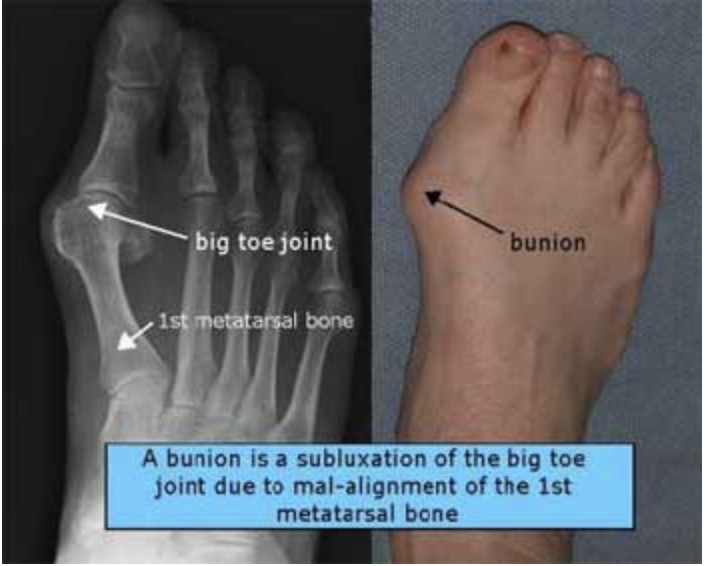
Bunion
Bunions are the long results of a dysfunctional weak foot or improper footwear. It’s more than just a bump! It’s the metatarsal head being shifted towards the other toes. A bunion gets worse over time, becomes stiffer and more painful. Most importantly it throws off the biomechanics over the entire leg and low back.
Symptoms
- Pain and swelling of big toe joint
- Altered mechanics and possibly pain of the ankle, knee, hip, and low back
Treatment
Treatment is focused on preventing the advancement and further displacement of the metatarsal head. If progression and pain become severe then your doctor may suggest surgery to reposition the bone and remove the bump. Better to completely rehab the foot!!
Medial Plantar Nerve
 This nerve is a common underappreciated cause of big toe pain and arch pain. This nerve runs along the arch deep to the abductor hallucis and continues along to supply the inner and outer portion of the big toe. This nerve can become easily entrapped or overstretch from the poorly controlled movement of the arch and big toe.
This nerve is a common underappreciated cause of big toe pain and arch pain. This nerve runs along the arch deep to the abductor hallucis and continues along to supply the inner and outer portion of the big toe. This nerve can become easily entrapped or overstretch from the poorly controlled movement of the arch and big toe.
Symptoms
- Arch and big toe pain with movement, often sharp.
Treatment
- Tibial nerve Stretching
- Manual release of medial plantar nerve.
GET IN TOUCH WITH DR. DEAN
YOU should be able to move the way you’d like to move without experiencing pain. YOU should be able to experience freedom and energy knowing there’s nothing holding back from giving your life 110%. Dr. Dean would like to learn more about your challenges with a quick phone or email before beginning treatment. Contact him today.
